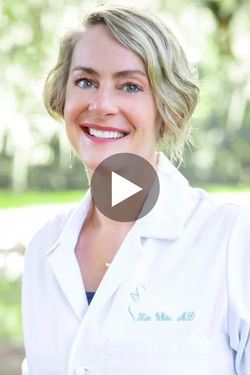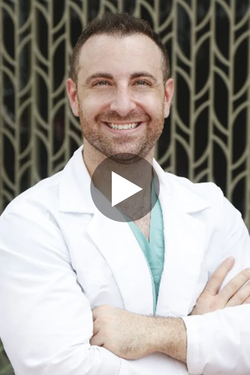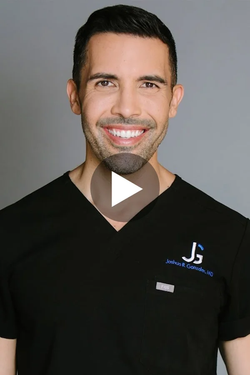Other than attempting to put a condom on a banana, sex education in school was pretty nonexistent.
Being a teenager is tough. Your body’s changing, emotions are intense, and talking about it feels awkward, especially when no one else wants to talk about it either.
When you finally find out what ‘sex’ is, the only things you’re taught are:
- If you’re a man, you put your penis inside a vagina
- If you’re a woman, you’ll get pregnant from having sex
Most of what we learn about sex focuses on reproduction and disease.
This lack of comprehensive sex education leads to a whole host of problems, from unsatisfying sex to the inability to orgasm.
Sex education needs a serious overhaul. While we can’t rewrite the past, we can cover what should’ve been included. Here are 10 things you deserve to know about sex, pleasure, and intimacy.
1. What the clitoris is – and how to find it
Sex ed teaches about anatomy, yet somehow skips the clitoris entirely. Which is wild, considering it’s the powerhouse of female pleasure. Packed with over 10,000 nerve endings, this erectile tissue is key to female sexual arousal and orgasm.
But just knowing the clitoris exists is only the tip of the iceberg, especially when no one teaches you where it is or how it works. What most people call the “clitoris” is really just the clitoral glans, the tiny nub at the top of the vulva that swells when aroused. In reality, the clitoris is a far more intricate structure - a wishbone-shaped network of nerves and tissue that extends deep into the body, surrounding the vaginal canal.
2. The real meaning of consent
Consent is more than saying yes.
Consent means giving informed, enthusiastic permission - freely, clearly, and without pressure.
Too often, we're only taught that "no means no." But what if someone feels too awkward to say no? What if they say yes at first, then change their mind? These situations aren’t covered in traditional sex education, but they matter immensely.
Real consent means knowing it's always okay to stop, speak up, or shift your boundaries. If a yes comes from guilt, pressure, or discomfort, it isn't true consent. Saying yes because you're afraid to say no isn't consent either.
At the heart of it is bodily autonomy - the understanding that your body belongs to you, and no one has the right to touch it without your clear and willing agreement.
Sex should never be something you tolerate. It should be something you genuinely want, and something that brings you pleasure.
3. Literally anything about LGBTQ+ sexuality
Sex ed rarely, if ever, talks about LGBTQ+ sexuality. If it was mentioned at all, it was usually in the context of HIV or bullying, never about pleasure, relationships, or what queer sex even looks like.
LGBTQ+ people have always existed, and sex ed should reflect that because no one should grow up thinking their identity makes them invisible or inferior.
Everyone deserves to understand their body, their desires, and how to have safe, satisfying sex - regardless of who they're attracted to or how they identify. That includes learning about different types of sex and how to talk about needs and boundaries when traditional scripts don’t apply.
4. Sex isn’t just penetrative
When we hear the word “sex,” most of us picture penis-in-vagina intercourse. But sex has a much more expansive definition than that. Instead of assuming sex means penetration, let’s start assuming it means pleasure. And there are many ways to get there.
Non-penetrative sex can be just as intimate, satisfying, and meaningful. That includes things like oral sex, mutual masturbation, and full-body touch - and it’s not limited to LGBTQ+ people.
Even in heterosexual relationships, penetration isn’t always wanted or comfortable. Women who’ve recently given birth or are going through menopause often experience pain with penetration. For them, non-penetrative sex isn’t just valid, it can be essential to keeping intimacy and connection alive.
5. Pornography doesn’t represent real sex
For many people, porn was their sex education, filling the gap left by the lack of comprehensive sex ed. But that's problematic because porn is scripted adult entertainment. It's not designed to teach; it’s designed to arouse. It’s a performance, not an education.
Bodies are often unrealistic, reactions are exaggerated, and storylines prioritize visual appeal over real pleasure. This can leave people with warped expectations of what sex actually looks and feels like. Now, this isn’t to say that porn is bad. But it’s important to understand where it falls short. That gap between fantasy and reality is exactly what gave rise to ethical porn.
Ethical porn exists because people wanted something that reflects real intimacy, not just performance. Something that can be arousing and affirming at the same time.
Sex ed should include these conversations. Not to shame porn, but to show that sex is more than a script, and that pleasure looks different for everyone.
6. Safe sex practices
Sex ed often made safe sex sound like a buzzkill - just a list of rules and warnings. But the reality is, understanding protection is part of taking care of your body and your pleasure.
Even though most sex ed involved putting a condom on a banana, many still don’t know how to use a condom properly. That’s the irony - basic education was treated like a box to tick, not something worth actually understanding.
There are many forms of contraception available, but most people only hear about condoms and birth control pills. What often gets left out are the side effects of birth control, how different methods work for different bodies, and that STIs can still be passed through oral sex if protection isn’t used.
Safe sex doesn’t have to feel awkward or unsexy. Using condoms, lube, or asking about STI status should be as normal as asking someone what they’re into. And if you want to use a condom for peace of mind, even if you’re on another form of contraception, that’s valid.
7. Orgasm isn’t everything
Studies show that around 75% of women don’t orgasm through penetration alone. Yet so many people still treat orgasm as the goal of sex, as if everything else doesn’t count.
This mindset creates pressure, unrealistic expectations, and a narrow view of what good sex looks like. It can also lead to performance anxiety, which ironically affects 1 in 4 men under the age of 40. When orgasm becomes the measure of success, nobody wins.
Pleasure shouldn’t be defined by climax. It includes touch, connection, arousal, and intimacy. Letting go of the pressure to perform is often what makes space for real pleasure to happen.
No one should feel embarrassed or ashamed for not orgasming during sex. Everybody responds differently. What matters is feeling good, not proving anything.
8. Kinks and fetishes are okay
Sex ed rarely touches on the fact that people are turned on by different things. It's only through sexual exploration that many discover they enjoy BDSM or kink activities like being tied up, spanked, dominated, or engaging in role-play.
These desires aren’t weird or wrong. They’re part of a broad, valid spectrum of human sexuality. What matters is that everything is consensual, safe, and enjoyable for everyone involved.
We should be taught that exploring kinks and fetishes is normal, and that pleasure doesn’t have to fit a standard script. Curiosity is healthy. Shame is not.
9. Masturbation is normal
Masturbation is one of the most natural ways to explore your body, discover what feels good, and understand your own pleasure. Yet in most sex ed, it’s barely mentioned - or framed as something shameful.
In reality, masturbation has real health benefits. It can reduce stress, help you sleep better, relieve period cramps, and even boost your mood through feel-good hormones like dopamine and oxytocin.
Masturbation can also be medicinal. For example, during menopause, regular stimulation increases blood flow and helps prevent vaginal atrophy - a common issue when estrogen levels drop. It’s a "use it or lose it" situation when it comes to keeping vaginal tissue healthy and responsive.
Masturbation isn’t something to hide or feel embarrassed about. It’s a normal, healthy part of sexual wellness, and everyone deserves to know that.
10. Using sex toys isn’t wrong; it’s actually healthy
Sex toys are often treated as taboo, especially in traditional sex ed, if they’re acknowledged at all. Unfortunately, there are still plenty of outdated misconceptions about using sex toys, like the myth that vibrators can desensitize you or that vibrators are only for women.
In reality, using them is completely normal and can actually support your sexual health. Sex toys can help people explore their bodies and discover what feels good. Certain types, such as vibrators, can also address concerns like low arousal, vaginal dryness, and even erectile dysfunction.
Using sex toys is one of many ways to support your health, your pleasure, and your overall well-being. It’s time we stopped treating that as a shameful secret.
Takeaway
Sex is personal, messy, ever-evolving, and deeply human. It deserves to be talked about with honesty, not shame. Most of us were never given the full picture growing up, but that doesn’t mean it’s too late to learn.
The more we unlearn outdated ideas and embrace curiosity, the better sex becomes - not just for us, but for everyone we share it with.
So now that we’ve covered what should have been in sex ed, consider it your starting point. If you’re ready to take things further together, it’s time to graduate to how to use a couples vibrator for mutually mind-blowing pleasure.








































